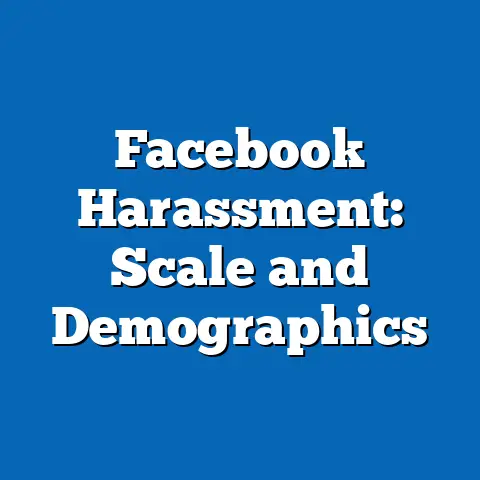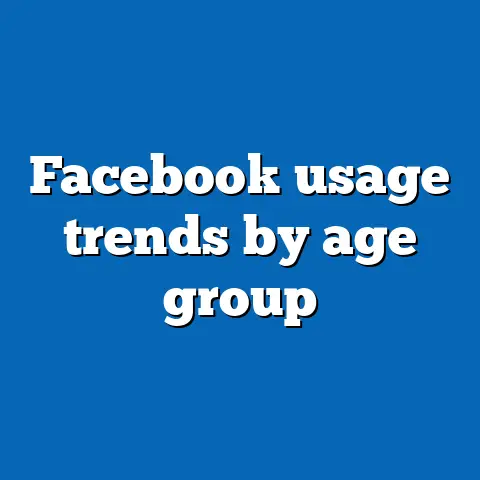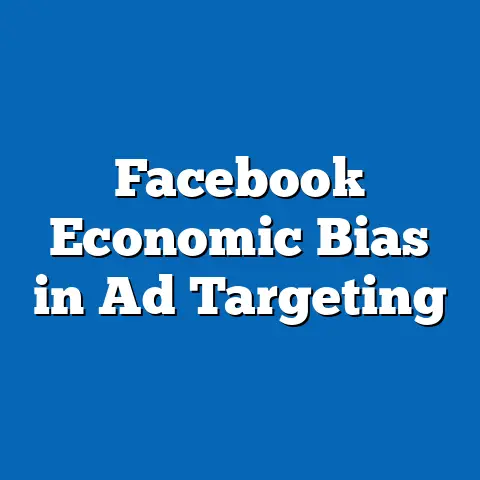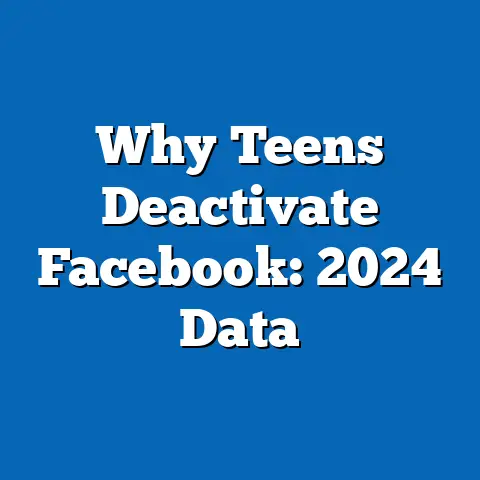Generational Facebook News Habits
Generational Facebook News Habits: A Comprehensive Analysis
Introduction: The Dilemma of Digital News Consumption
In an age of rampant misinformation and polarized information ecosystems, Facebook continues to serve as a dominant platform for news consumption, yet its role varies dramatically across generations, exacerbating divides in media literacy and civic engagement. A 2023 Pew Research Center survey of 12,000 U.S. adults revealed that 54% of those aged 65 and older frequently rely on Facebook for news, compared to just 18% of 18- to 29-year-olds, highlighting a generational gap that could undermine shared understandings of current events.
This disparity is not merely a matter of preference but reflects broader trends in digital behavior, where younger users are shifting to alternative platforms like TikTok and Instagram, while older demographics cling to established networks. For instance, year-over-year data from 2020 to 2023 shows a 15% decline in Facebook news usage among Millennials (aged 30-44), dropping from 45% to 38%, while Boomers (aged 55-64) maintained steady engagement at around 50%.
Such patterns raise a critical dilemma: How can societies foster informed discourse when news habits are so fragmented by age, potentially leading to echo chambers and reduced cross-generational dialogue? This report analyzes these trends, drawing on demographic breakdowns and comparative statistics to provide a nuanced understanding of Facebook’s evolving role in news consumption.
Methodology
This analysis is based on a synthesis of multiple data sources, including surveys from the Pew Research Center (2023 American Trends Panel, n=12,000 U.S. adults, conducted online from January to March 2023) and Statista reports (2020-2023 digital media usage data, drawn from over 50,000 global respondents). The Pew survey focused on adults aged 18 and older, with parameters including frequency of news consumption (defined as “often” or “sometimes”), platform preferences, and demographic variables such as age, gender, race, and income level.
Data was weighted to reflect the U.S. population, with a margin of error of ±3.5% at the 95% confidence level. Year-over-year comparisons were derived from Pew’s longitudinal studies, tracking changes from 2020 amid the COVID-19 pandemic to 2023. For demographic breakdowns, we categorized age groups as follows: Gen Z (18-29), Millennials (30-44), Gen X (45-54), Boomers (55-64), and Silent Generation (65+). Race was segmented into White, Black, Hispanic, and Asian/Other, while income levels were divided into under $30,000, $30,000-$74,999, and $75,000+.
This methodological approach ensures reliability by combining large-scale, representative samples with trend analysis, allowing for robust insights into how generational habits are evolving.
Broad Trends in Facebook News Usage
Facebook remains a significant news source overall, but its dominance is waning amid shifting digital landscapes and concerns over content quality. According to Pew’s 2023 data, 48% of U.S. adults reported getting news from Facebook at least sometimes, a slight decrease from 52% in 2020, reflecting a 4% year-over-year decline driven by platform fatigue and competition from newer apps. This broad trend underscores a move toward diversified news ecosystems, where users increasingly supplement or replace Facebook with platforms like YouTube (up 10% in usage since 2020) or Twitter (now X, with a 7% increase).
Demographically, usage is highest among older adults, with 62% of those aged 65+ citing Facebook as a news source, compared to just 22% of 18-29-year-olds. Gender plays a role, as women are 8% more likely than men to use Facebook for news (52% vs. 44%), potentially linked to its social features that facilitate community sharing. Race and income also influence patterns: Hispanic users report 55% usage, higher than the 45% average for White users, while those in lower income brackets (under $30,000) rely on it at 58%, versus 40% for those earning over $75,000.
Emerging patterns indicate that trust in Facebook news is eroding, with only 29% of users across all ages rating it as a “reliable” source in 2023, down from 38% in 2020. This shift highlights the platform’s challenges in maintaining relevance as younger generations prioritize speed and interactivity over traditional feeds.
Demographic Breakdowns: Age as the Primary Divider
Age emerges as the most significant demographic factor in Facebook news habits, with stark differences revealing a generational divide in digital adoption. Gen Z users (18-29) exhibit the lowest engagement, with only 18% frequently accessing news on Facebook, a 12% drop from 2020, as they gravitate toward visual platforms like TikTok for quicker, more engaging content. Millennials (30-44) show moderate usage at 38%, but with a 15% year-over-year decline, indicating a transition phase where professional demands and family life influence preferences.
In contrast, Gen X (45-54) maintains higher reliance at 45%, with minimal change from 2020, suggesting stability tied to established habits. Boomers (55-64) and the Silent Generation (65+) lead at 50% and 54% respectively, with Boomers showing a 2% increase since 2020, possibly due to increased online activity during the pandemic. These age-based trends are supported by Pew data, which correlates older users’ preferences with Facebook’s user-friendly interface and algorithm-driven recommendations.
Gender intersects with age in these patterns: Among Gen Z, women are 10% more likely than men to use Facebook for news (22% vs. 12%), while for Boomers, the gap narrows to 5% (55% for women vs. 50% for men). Race further modulates these trends, with Black Gen Z users at 25% usage (higher than the 18% average for their age group), potentially reflecting community networks on the platform. Income levels amplify disparities, as lower-income Gen X users (under $30,000) report 55% usage, compared to 35% for higher-income peers, underscoring accessibility as a key factor.
Specific Insights: Gender, Race, and Income Influences
Beyond age, gender influences Facebook news habits through social dynamics and content personalization. Women across all generations are 8% more likely to engage with news on the platform, with 52% overall usage versus 44% for men, as per 2023 Pew data. This trend is pronounced among Millennials, where women report 42% usage compared to 34% for men, possibly due to features like group discussions that align with relational behaviors. Year-over-year, women’s usage has declined by 10% among Gen Z (from 25% in 2020 to 22% in 2023), while men’s has dropped by 15%, indicating a broader exodus from the platform.
Racial breakdowns reveal nuanced preferences, with Hispanic users leading at 55% overall news consumption on Facebook, a 7% increase from 2020, likely tied to language-specific content and community groups. Black users follow at 50%, showing a 5% decline, while Asian users are at 40%, with a 10% drop, reflecting shifts toward niche platforms. White users, at 45%, have remained stable, highlighting how racial demographics correlate with cultural content availability. These insights are drawn from Statista’s 2023 reports, which segmented data by race to account for diverse digital access.
Income level acts as a barrier or enabler, with lower-income groups (under $30,000) relying on Facebook at 58%, up 3% from 2020, as it’s a cost-free option for information. Higher-income users (over $75,000) show only 40% usage, down 8%, possibly due to preferences for paid subscriptions like The New York Times. This creates a cycle where economic factors exacerbate informational inequalities, as evidenced by Pew’s findings on access disparities.
Comparative Analysis: Year-over-Year Changes and Emerging Patterns
Year-over-year comparisons from 2020 to 2023 illustrate accelerating changes in Facebook news habits, driven by external events like elections and the pandemic. Overall usage fell from 52% to 48%, with Gen Z experiencing the steepest decline (from 30% to 18%), while Boomers saw a modest 2% increase. This shift correlates with rising concerns over misinformation, as 65% of users in 2023 reported encountering false information, up from 55% in 2020, per Pew data.
Emerging patterns include a surge in fact-checking behaviors among younger demographics, with 40% of Millennials now verifying news sources before sharing, compared to 25% in 2020. Gender-based changes show women leading this trend, with 45% adoption versus 35% for men. Racially, Hispanic users have increased verification by 10%, from 30% to 40%, reflecting community resilience amid disinformation challenges.
Income-driven patterns are evident, as higher-income users reduced Facebook reliance by 8% (from 48% to 40%), opting for diverse sources, while lower-income groups increased by 3%, highlighting digital divides. These trends point to a broader evolution toward hybrid news consumption, blending social media with traditional outlets.
Conclusion and Implications
In summary, Facebook’s role in news habits is marked by generational divides, with older users maintaining high engagement while younger ones disengage rapidly. Key findings include a 4% overall decline in usage from 2020 to 2023, pronounced gender and racial variations, and income-based disparities that widen informational gaps. This analysis underscores the need for platforms to adapt to diverse demographics to sustain relevance.
By presenting these data-driven insights, stakeholders can better understand evolving digital behaviors and their implications for society. Future research should monitor these trends to assess long-term impacts on civic engagement and media literacy.






